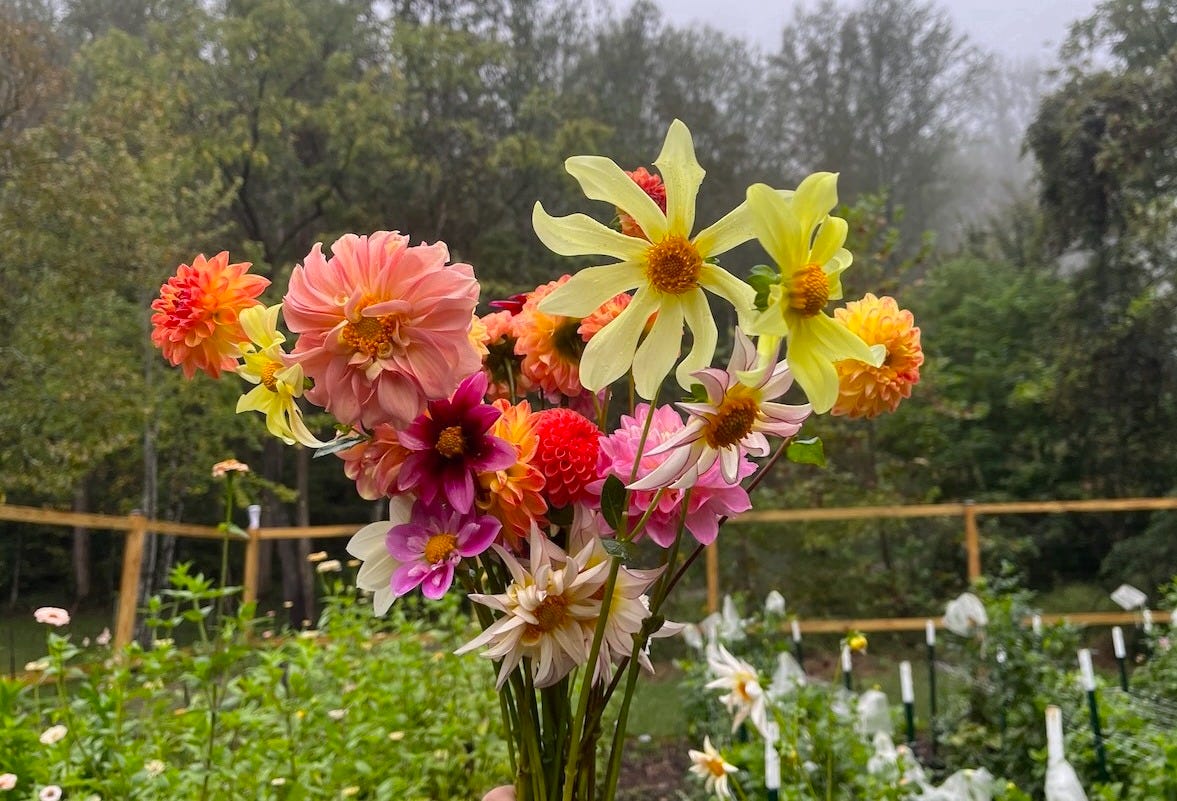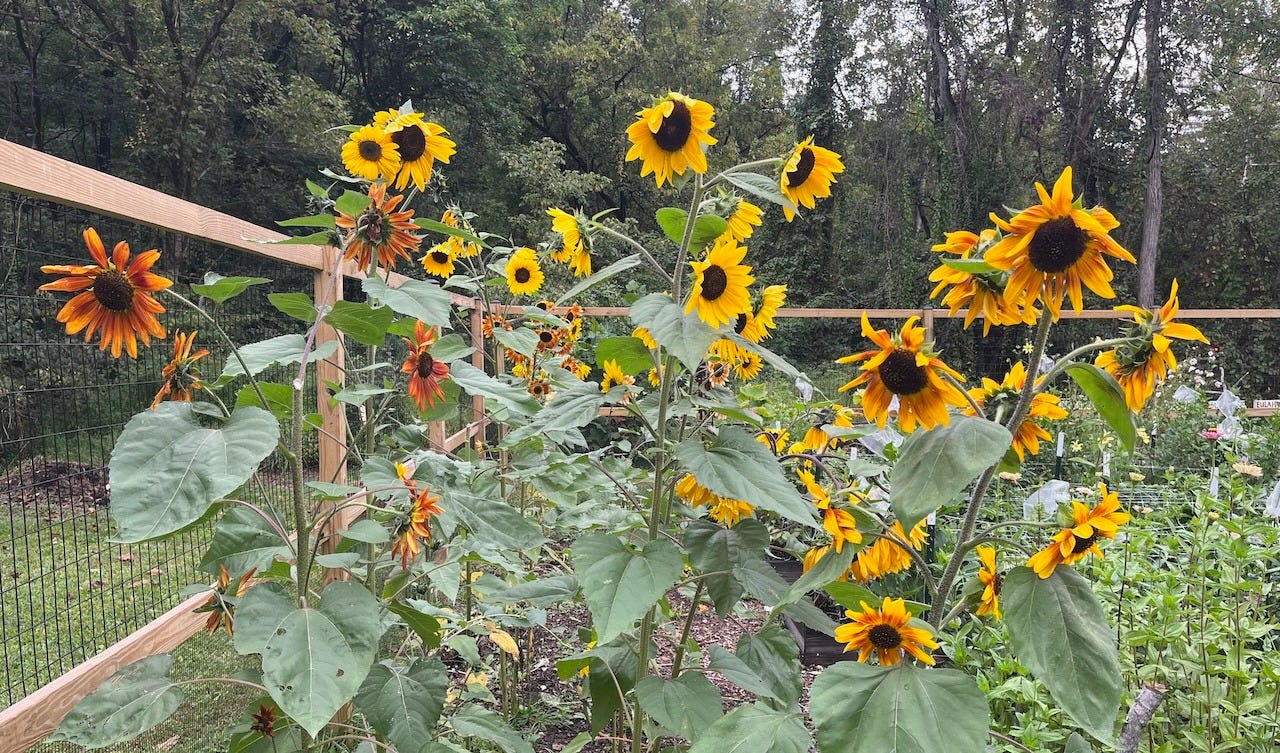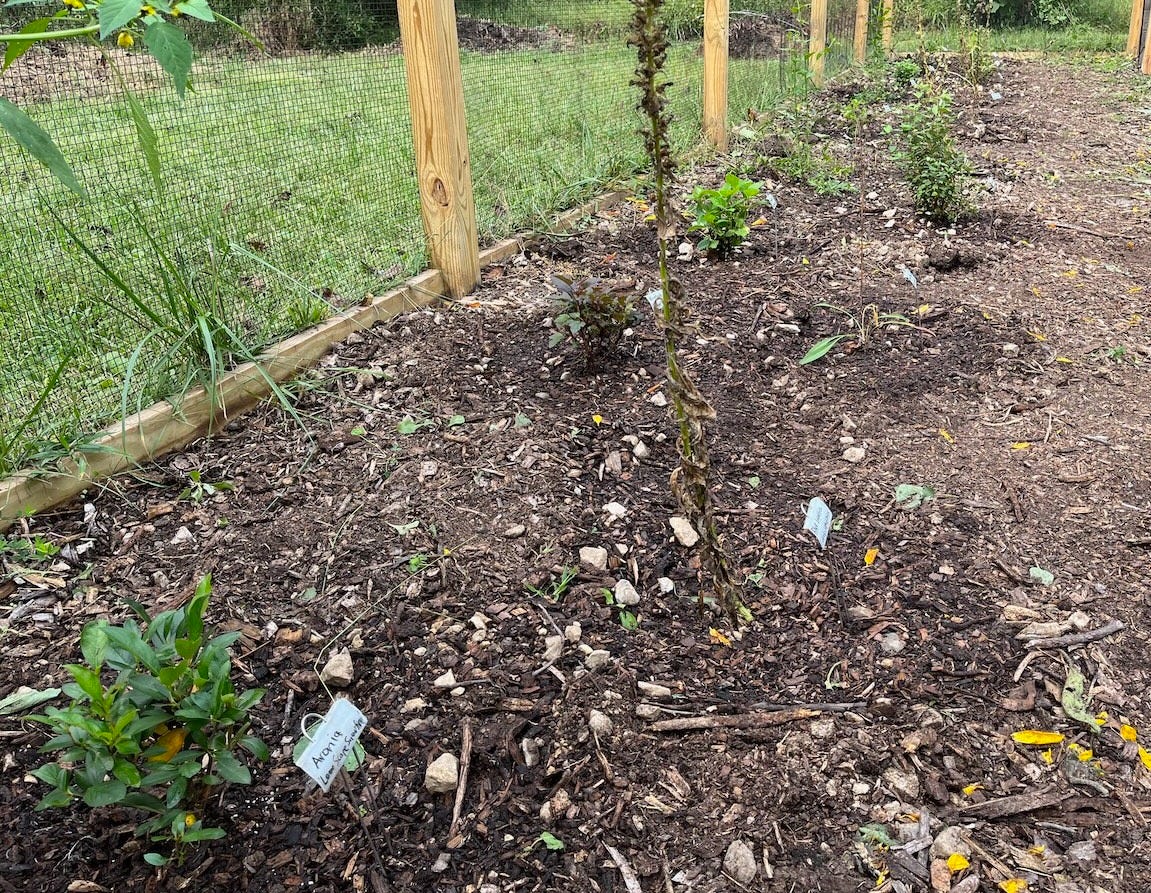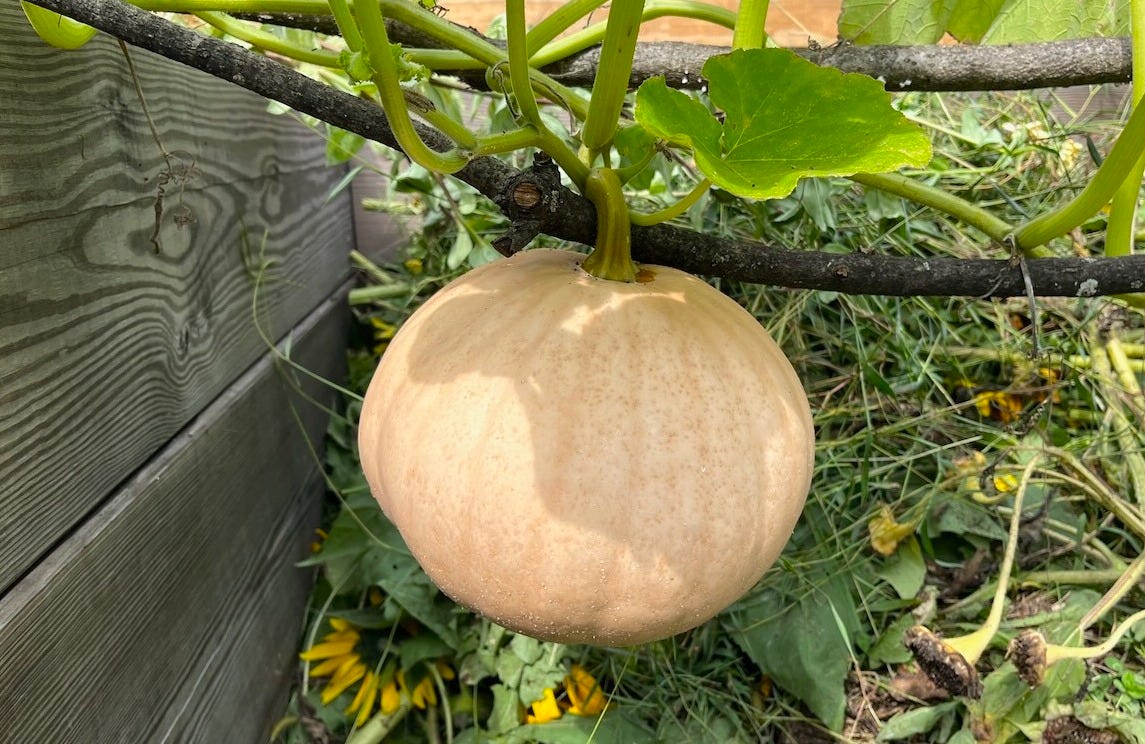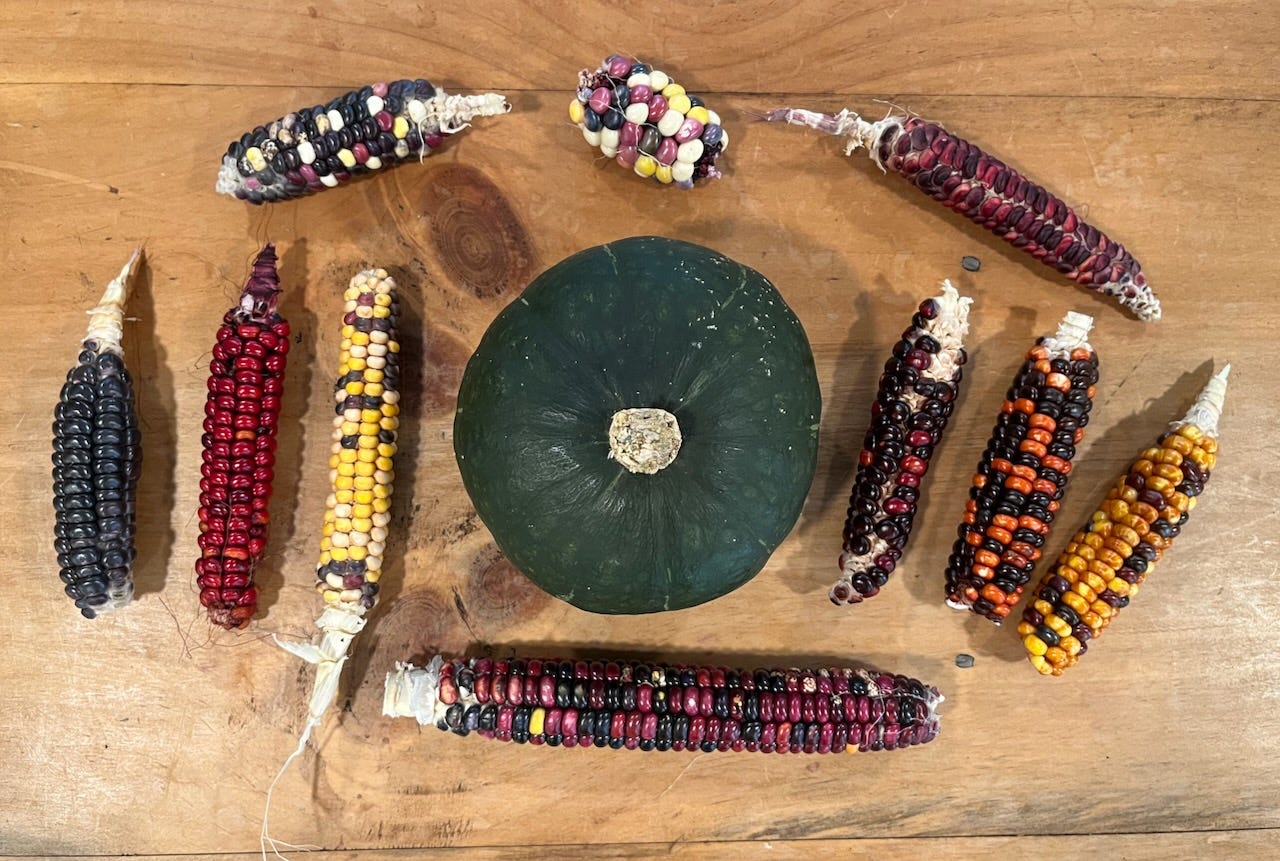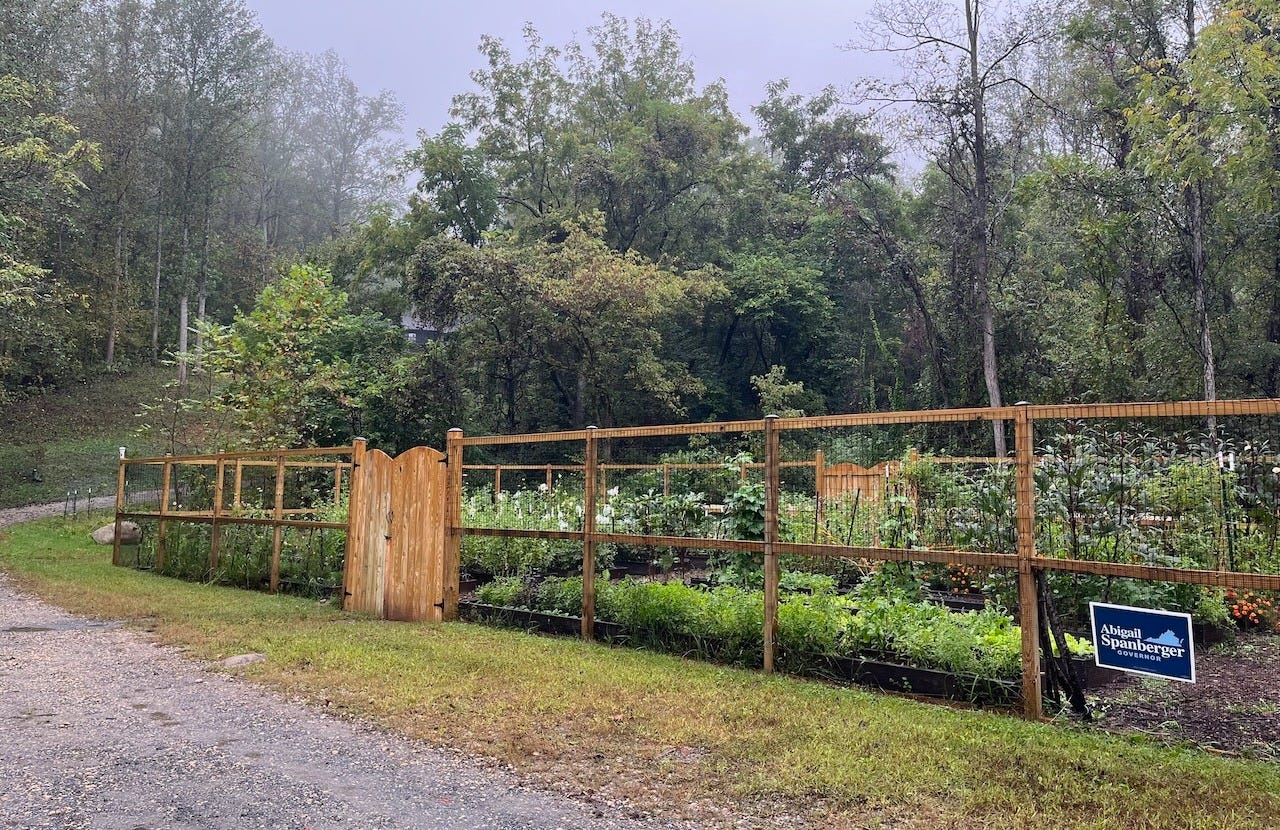The sky says time is running out.
Leaves pitter-patter by the tens of thousands onto the forest floor. A deafening swarm of grackles screech through the canopy. Dewy drops of morning mist cheer blight along its sickly creep.
Like our ancestors, I ride the pulse of the harvest’s bounty, preparing for harsher times to come. I sow my final round of fall and winter seeds – spinach, beets, radishes, and parsnips – joining the lettuce, kale, and chard already finding their way into daily salads. I gather “soft” herbs as the rains return, drying lemon and lime balm, lemon verbena, and spilanthes for tea, alongside bundles of pineapple and fragrant pitcher sage (descendants of plants from my former LA garden) for joyful smudging.
I watch next week’s forecast flirt with lows in the high 40s, begging the question of whether to stretch the summer crops until they succumb, or preemptively remove them while there’s still time for a cover to germinate. But with every row of flowers I remove, my capacity for income plunges; if I don’t pull the sickly crops, I risk disease hibernating in the soil, imperiling next year’s growth.
As we’ve now moved through the Fall Equinox – the point at which day and night are perfectly in balance – we enter the darker half of the year, with sunlight dwindling until we hit the Winter Solstice. Conditions become increasingly hostile above ground, so our plant friends begin returning their energy to the earth, strengthening their roots, building connection.
But how can we join them when our democracy teeters on the brink, costs of living spiral out of reach, hostility towards truth and compassion reign supreme?
How do we embrace the shadows’ return without them swallowing us whole?
For the last decade, I’ve navigated ceaseless uncertainty as a freelance television writer, a career that has made me constitutionally incapable of making decisions more than a few months in advance. Though the coping skills I cultivated have proven useful in the relentless chaos of the 2020s, maintaining a lifestyle of “drop everything and return to work” becomes harder the deeper I inhabit life as a flower farmer.
But television writing, like farming, is by definition a seasonal job, and given the economic realities of two unstable industries, I must juggle both in order to survive. With the sun setting earlier behind the mountain each day, the woods subsumed by a patchwork of tartan elegance, my growing season here quickly draws to a close, putting renewed emphasis on my writing to provide the sustenance I need for winter – as well as pushing me to finish any lingering garden projects while I still have enough light and warmth to do so.
This week, that meant felling the sunflowers and planting out the cutting hedgerow – a collection of flowering shrubs and herbaceous perennials to be used as a renewable source of foliage for bouquets. Following this helpful guidance from Floret, I selected mostly natives that would thrive in the site conditions – as well as benefit from the 8-ft fence, beyond the reach of browsing deer.
Since the market garden sits atop compact sand and river rock, digging the holes proved a torturous endeavor. But three applications of mulch since March provided enough organic material to get the plants situated (in the back, chokeberry, hydrangea, ninebark, and strawberry bush; in the front, blue lobelia, rough blazing star, and meadowsweet, to be joined in the spring by astilbe and bee balm).
Because of how hard it was to work with the soil, I’m questioning my plan for a blueberry hedgerow on the opposite end of the garden – especially because of the surrounding black walnut trees, whose fruit, leaves, and roots emit a natural toxin inhibiting growth for many plants. As shadow outpaces the light, doubt fills the gaps, the clock ticking as I decide how to shepherd next year’s sun.
Perhaps I cannot yet solve every riddle; perhaps I must leave room for new dreams to unfold.
The cottage garden – so-called because it sits next to the cottage where I live – was the first place our family grew food in the hollow. We chose the site because it was inside the footprint of the former owners’ vegetable plot, and everywhere we dug, we hit rich, loamy soil. But in the interest of freeing up the entire market garden to grow cut flowers next year, we’re hoping to move all our food production up to the cottage garden, prompting us to investigate exactly how far the old plot extended.
So my mom phoned the previous owners – a cheerful couple well into their 80s – who eagerly offered to come by and show us exactly where everything was. Though her vision has started to fail her, the head gardener wife bounded up the grassy slope to show us the half-buried rocks that marked her two vegetable terraces – both of which she double dug herself – as well as pointing out spots we should leave undisturbed (like the hydrangea at the corner of the plot, planted atop a former tenant’s dead dog).
We peppered them with questions about whether they had issues with voles (yes, of course); if the flat-edged rocks I’d taken from the woods to build our herb garden were part of an ancient stone wall (yes, of course); if she intentionally planted the roses lining the front walkway in a rainbow pattern (yes, of course).
While showing them my market garden – adjacent to the ponds they dug out of the wetlands forty years ago – I watched the trout farmer husband wander through the dahlias with a dazed look. When his wife told him I was building a garden on top of the parking lot for the trout farm, he couldn’t really understand what I was trying to do – especially because there isn’t much soil to speak of. But now that he had seen it, he was amazed by the outcome.
“I never would have thought to do something like this,” he said. “Sometimes it just takes a different vision.”
He marveled at how fortunate he was to have chosen a family who took such good care of the land. He told me he hoped to see me at least one more time before it’s all over; I said I hoped the same.
As darkness descends, I surround myself with memories of the sun. A hunter green buttercup squash, a handful of half-grown ruby and violet corncobs, an avalanche of dried chile peppers – proof that I made something of this year. I straddle the unknowing, seeking wisdom from the shadow to illuminate my mistakes.
If we’re lucky, we may yet get the chance to make a new choice, to root out our shortcomings, to forge a different path. May we channel our abundance into the majesty of a seed, to birth a new tomorrow when summer comes again.


